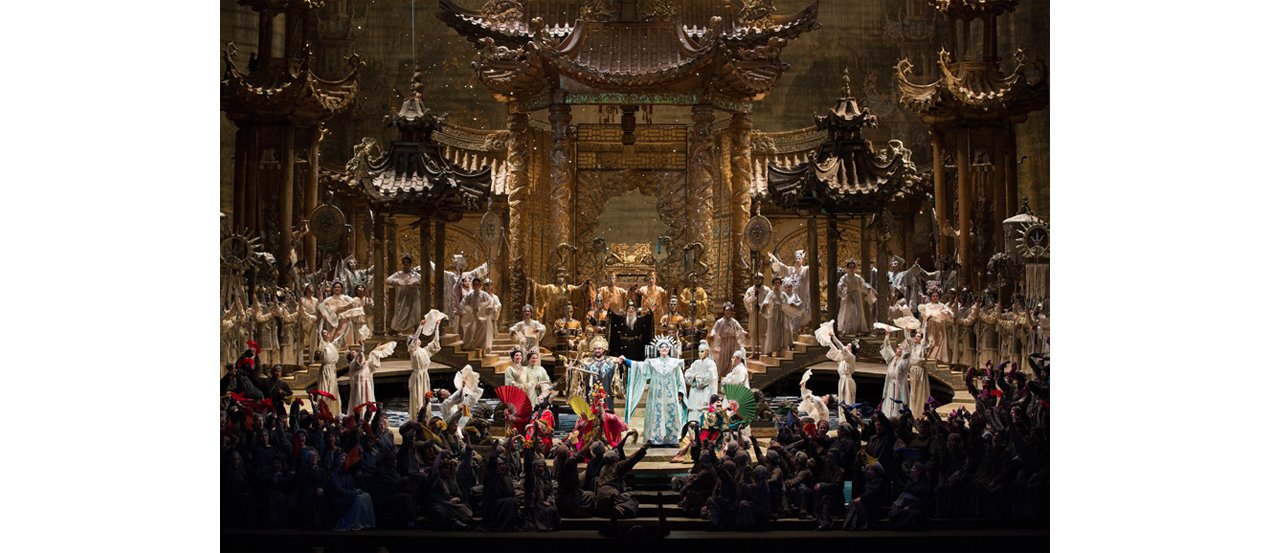Giacomo Puccini’s sumptuous opera “Turandot” — which The Metropolitan Opera is presenting in Franco Zeffirelli’s shimmering production through Jan. 30 — fascinates for many reasons. It was the composer’s last opera, completed by his friend, Franco Alfano, working from sketches Puccini left behind. Indeed, at the 1926 premiere at La Scala in Milan, conductor Arturo Toscanini interrupted the production at the end of Act 3, Scene 1 and announced that it was at this point that the composer put down his pen.
What he created and Alfano finished — brutal and majestic — has not been without controversy, notably for what many have considered a stereotypical depiction of the Chinese that in turn played into Communist Chinese stereotypes of an untrustworthy West. China, however, has long since embraced the operatic chestnut, most notably in the titanic production staged in 1998 by Zhang Yimou and conducted by Zubin Mehta. (A film of “Turandot in the Forbidden City” was subsequently shown on PBS.)
But among the intriguing questions that remain is one about the story itself, which is: How does a Central Asian prince, Càlaf, wind up in China in love with the title princess, whose name, by the way, isn’t Chinese but also Central Asian? (Perhaps that’s too literal a question. This is, after all, opera, with everybody singing in Italian.)
The answer lies in the story’s complex history, which begins not in China but in Persia with “Prince Khalaf (Càlaf) and the Princess of China” from the collection “The Book of a Thousand and One Days” (as opposed to its more famous sister, “The Book of a Thousand and One Nights,”) translated in the early 18th century by the French diplomat François Pétis de la Croix. (Other sources include Persian poet Nizami Ganjavi’s 12th-century narrative work “Haft Paykars,” Carlo Gozzi’s sardonic commedia dell’ arte play “Turandot” (1762) and playwright Friedrich Schiller’s romantic reinterpretation of Gozzi’s work (1801).
What they all have in common is the riddle meme (boy meets girl, girl poses three tough questions boy must answer to win her heart) that Richard Stoneman, author of “Alexander the Great: A Life in Legend,” says has been time-honored since the days of ancient Greece and the ancient Middle East, with tales of Oedipus and the Sphinx and King Solomon and the Queen of Sheba.
Alexander, the real-life Greco-Macedonian conqueror of the Persian Empire, and the mythical Assyrian queen Semiramis find their way into the riddle literature in a medieval Greek poem that was discovered in the Holy Monastery of St. Catherine in Sinai, Egypt. The Alexander of legend presents himself to Semiramis as a suitor, just as Prince Càlaf does before the icy, man-hating Turandot. (She’s an ice princess with a cause — revenge for the defilement and murder of her revered ancestress Princess Lo-u-Ling at the hands of foreign invaders.)
Like Turandot, Semiramis warns her suitor that she will yield only if he correctly answers her impossible questions. In both “Turandot” and the Alexander poem, failure to do so will result in death.
Of course, the ardent suitors are brave enough — and smart enough — to risk all for love. Shouldn’t that always be the way?
For tickets and more, visit metopera.org.





